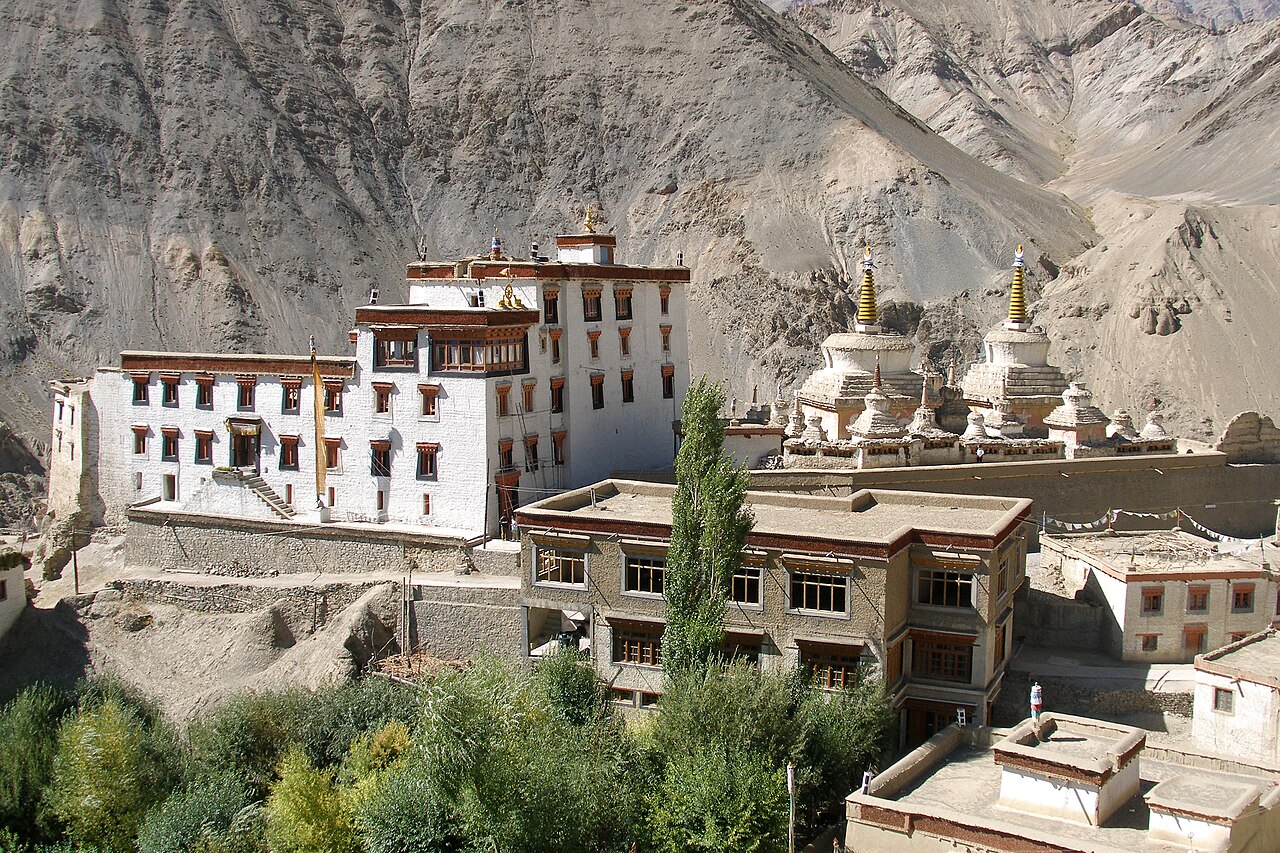India’s landscapes and cultures are so varied that a single journey rarely captures them all. Among the most striking contrasts are Rajasthan in the west and Ladakh in the far north. One is a desert kingdom of palaces and color; the other a Himalayan plateau of silence and high peaks. Traveling through both reveals two very different worlds, yet each carries a sense of timelessness.
The Desert Kingdom of Rajasthan
Spread across the arid plains of northwestern India, Rajasthan is a land of old royal capitals and lively markets. Cities like Jaipur, Jodhpur and Udaipur have grown around ancient forts and lakes, and their streets still carry the echoes of a princely past. Walking through Jaipur’s pink-painted old town, you can trace a thousand years of history in the intricate facades and bustling bazaars.
A Rajasthan map is the best starting point for any trip. The distances between cities are greater than they appear, and each region has its own flavor. Jaisalmer rises from the Thar Desert like a golden mirage, with sandstone walls glowing at sunset. Jodhpur is known as the Blue City for the indigo houses clustered beneath the massive Mehrangarh Fort. Udaipur, with its lakes and marble palaces, offers a more romantic setting, especially when the evening lights reflect on the water.
Beyond the big names, smaller towns such as Bundi or Shekhawati surprise visitors with painted havelis and quiet lanes. Traveling here is not only about the monuments but also about meeting people who maintain centuries-old traditions of crafts and hospitality.
The Call of the Himalayas
Far away from Rajasthan’s heat and dust lies Ladakh, a high-altitude region where the Himalayas touch the sky. From the moment you land in Leh, the capital, the thin air and the mountain light create a different rhythm. The scenery is stark yet beautiful: snow-capped peaks, deep valleys and rivers that shine a bright turquoise.
Trekking is one of the best ways to experience Ladakh. Among the many routes, the Markha valley trek is often described as the most rewarding. It leads you through remote villages, willow groves and high passes where prayer flags flutter in the wind. Each day brings a new view of towering peaks and open skies. Nights spent in homestays or tents offer a chance to share tea and stories with local families.
Ladakh is also known for its Buddhist monasteries, many of which are perched on hilltops like fortresses. Hemis, Thiksey and Alchi are among the most famous. Their whitewashed walls and golden statues reflect a faith that has shaped life here for centuries. Visitors are often welcome to attend morning prayers, where the sound of horns and drums fills the cool air.
Experiencing Local Life
Both regions invite travelers to go beyond sightseeing. In Rajasthan, a stay in a heritage haveli or a village homestay reveals the warmth of local hospitality. You might join a family for a simple meal of dal and flatbread or watch artisans weave rugs and carve stone. The annual festivals, from Jaipur’s literature event to Pushkar’s camel fair, are celebrations of music, color and tradition.
In Ladakh, daily life is slower and shaped by the seasons. Farmers grow barley in the short summer and tend to yaks in the high pastures. Visitors who spend time with local families often speak of the quiet kindness they encounter. Simple acts, such as sharing butter tea or learning to make momos, create memories as lasting as the mountain views.
Planning Your Journey
Traveling from Rajasthan to Ladakh in one trip demands careful planning. The best season for Rajasthan is from October to March when the desert air is cool and clear. For Ladakh, the trekking season is shorter, typically from June to September when the mountain passes are free of snow.
Flights from Delhi connect easily to Jaipur, Jodhpur and Udaipur, and overnight trains link the main cities. To reach Ladakh, most travelers fly to Leh, although adventurous visitors sometimes take the road from Manali or Srinagar when the passes open in summer.
Packing for both regions requires flexibility. Rajasthan calls for light clothes and sun protection, while Ladakh demands warm layers even in July. Altitude in Ladakh can be challenging, so plan a couple of days in Leh to acclimatize before setting off on a trek.
A Journey of Contrasts
Exploring these two regions on the same trip is like traveling through two different countries. Rajasthan dazzles with its palaces and desert sunsets; Ladakh humbles with its vast silence and high mountain winds. Yet there is a quiet connection between them. Both have preserved traditions over centuries and both reward travelers who slow down and look beyond the surface.
Whether you trace the royal history of Rajasthan or hike through the wild beauty of the Markha valley, India’s diversity comes alive in these landscapes. The journey from the deserts of the west to the peaks of the north is more than a change of scenery. It is a reminder of how many stories and cultures India holds within its borders.

















